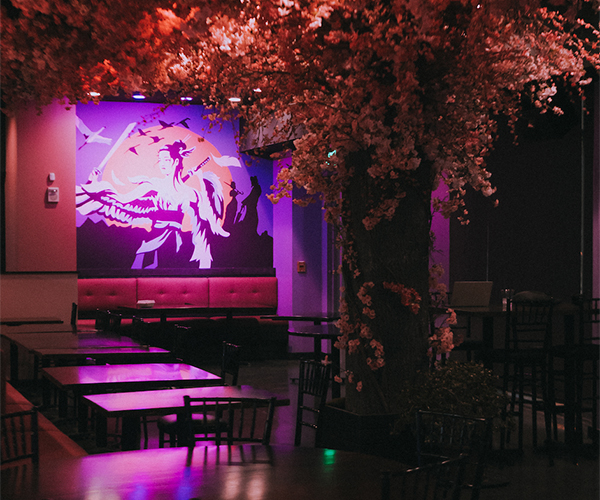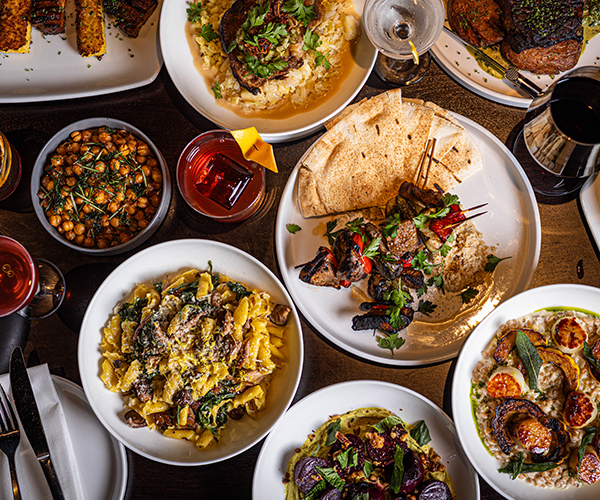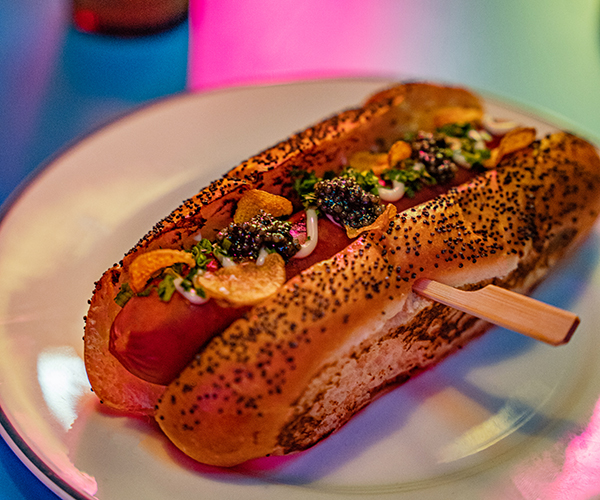Some folks can muse for hours about the merits of various Merlots. Connoisseurs of fine cuisine swoon over perfect medallions of pork.
I, too, admire great food and adore the luxury of having other people prepare it for me. But with apologies to Michael Symon and every other Cleveland chef who makes magic in a kitchen, it’s the service that keeps me coming back to a restaurant — or can drive me away forever.
I, too, admire great food and adore the luxury of having other people prepare it for me. But with apologies to Michael Symon and every other Cleveland chef who makes magic in a kitchen, it’s the service that keeps me coming back to a restaurant — or can drive me away forever.
I blame my years toting a tray and feeling my own share of heat in the kitchen, mostly while working the unforgiving concrete floor of Baker’s Café in Canton.
A locally renowned steak house, Baker’s opened in 1933 and moved to its current location in 1959. An unassuming concrete block structure in the shadow of Timken Roller Bearings’ towering smokestacks, it continues a tradition of exceptionally fine food today under chef and owner Jeff Hendershot. Except for an addition, it remains unchanged in all the important ways since I worked there in the late 1970s.
On my first day at Baker’s, I was introduced to the long-reigning chef, a formidable man named Al with a broad chest, sparse white hair and a Navy tattoo. He assessed me with one vertical glance.
“You’re a college kid, huh?”
I nodded, offering my best smile.
“I hate snot-nosed college kids,” he growled. “They don’t know crap, and they fall apart after two weeks.” He promptly returned to the T-bones on the broiler.
My smile wilted like sautéed spinach, but I managed to square my shoulders. “I’m a hard worker,” I squeaked, and I went to refill my customers’ water glasses.
“Good for you — you didn’t cry,” whispered a veteran waitress. “He almost always makes the new girls cry.”
As chefs have to pass basic grilling tests, perhaps this was the version designed for the fresh meat of new help. I was appropriately seared, and I wondered if I’d survive.
My job training consisted of three summers at the now-defunct L&K Restaurant near the Pro Football Hall of Fame.
I served a counter of vocal but good-natured construction workers and tables of families clamoring for all-you-can-eat perch specials. My clownish L&K uniform smock, with its wide orange and white stripes, was hideous enough to earn me sympathy tips. If I could withstand the annual chaotic throngs of Hall of Fame weekend and passably serve an unexpected Greyhound busload of senior citizens flush from a tour of Canton’s McKinley Monument, surely I could please a few high-end carnivores.
Looking back, when I showed up at Baker’s with my ponytail and can-do smile, I must have appeared unforgivably perky.
Waiting tables in a popular eatery is sink-or-swim. When the line of customers snakes out the door and your section fills up in seconds, you have two choices: Drown in a panic of orders and special requests (“Only three ice cubes in the Scotch-and-water, please”) or breathe deeply, finesse the kitchen without inspiring the chef’s wrath and dispense every course without tripping over a purse strap and diving head-first into a plate of salad.
Under these conditions, competency comes quickly or not at all. I soon reached the level of savvy required to please Baker’s loyal clientele, which ranged from well-heeled men escorting elegantly coiffed ladies in furs to bikers in black leather. Sitting back to back in their red vinyl booths under splashy, framed prints of impossibly beautiful señoritas with ruffle-trimmed cleavage and flounced skirts, our customers made a fascinating tableau. And whether they left in their wake the scent of expensive aftershave or a faint trace of exhaust fumes, they came to Baker’s for the same things: generous cocktails delivered promptly, exquisitely prepared steaks, the bill when they were ready for it — not a second too soon or too late — and everything served with a smile.
Over time, I made the grade in Chef Al’s eyes. “You’re not half bad for a snot-nosed college kid,” Al told me one night as he ground out his Camel nonfilter on a cigarette break. By then, I was wise enough to accept the compliment with the silent humility I knew he felt befitted my station.
Those years I spent wearing a black apron and sensible shoes are deeply embedded in my psyche. Once you’ve carried an armload of blistering platters, juggled 20 drink orders or been summoned by the snap of a customer’s fingers, you and your dining experiences are forever changed.
Waiting tables throughout college, I served many wonderful people. But I also endured cranks, cheapskates, derriere-patters and drunks. So anyone toting a tray of food nudges my empathy into overdrive.
I can overlook almost any lapse of service if it’s accompanied by earnest effort, a smile and a brief apology. But just as my carpenter friend can’t enter a room without his eye zooming toward an out-of-plumb door, I can’t help dissecting the details of restaurant service.
Do I have to ask twice for water? Does the coffee grow cold in the cup? Do the waiters gripe within earshot about the kitchen, each other or, worse, the customers? Most importantly, does the waiter seem to give a hoot about what he is serving and whether I like it?
Dining out is a luxury for me, a favorite indulgence made even more special in a strapped economy. That may explain why I don’t apply this peculiarly high standard to other service transactions.
I’m fine buying furnace filters without feeling warm and fuzzy, and cashiers can scan my groceries without comment or smile. But there’s something intimate about being served a meal — a small but important bond, though transitory, between the feeder and the fed.
Luckily, great service abounds in our local dining scene. Our Midwest leanings toward hospitality shine equally at linen-topped tables and laminate counters.
At Peggy’s Lunchbox in Northfield Village, I enjoy the kind of service that invites me to sit and make myself at home, that convinces me everything’s going to be fine once I try the special. The waitresses wear T-shirts proclaiming mantras such as, “If I don’t remember it, it didn’t happen.”
And my first visit to the reborn Lockkeepers in Valley View reminded me that delicious food served with polished hospitality resembles an entrée paired with the perfect wine: The whole is somehow greater than the sum of its parts.
Richard, our server, delivered our bread with the same care as our scallops. From greeting to gratuity, he flavored our night with a blend of affable familiarity, attentiveness and professionalism.
I’ve had similarly gracious service at Downtown 140 in Hudson (which this year made Zagat’s Top Five Food Rankings in Cleveland) and the tiny La Habana in Marblehead, where we savored authentic Cuban dishes and were treated like prodigal children welcomed home.
My most memorable service in recent history, though, was at the Hudson Aladdin’s, that reliable bastion of Middle Eastern food. Our meal was accompanied by a smile, and when I draped my jacket over my shoulders to ward off a chill, Vesta, the waitress, approached my table.
“It’s a little chilly in here, isn’t it?” Vesta asked. “I’ll ask the manager to adjust the temperature.” Later, she noticed me dabbing at a spot on my shirt, on which I’d clumsily dropped a bit of baba ghanoush. In a flash, she was at my side with a clean towel dipped in club soda: “Here you go — let’s catch that before it turns into a stain.”
I try to tip generously, but that’s the kind of service that makes me wish I had wads of cash to burn. Then I could be one of those rare and extravagant tippers, like the trio of highly skilled, well-paid men Timken hired years ago to climb and repair the top of that towering smokestack across the street from Baker’s.
Every day for two blessed weeks, they sat quietly in their steel-toed boots and coveralls eating lunch at the bar, paid their checks and left a $20 bill tucked under an empty plate — a tip sometimes larger than their actual tab.
My biggest tips came not from the customers in good suits and polished shoes, but from people who punched a clock.
Perhaps they related to the challenges of smiling graciously after eight hours on your feet, humoring a temperamental boss and catering to a hundred or so individual whims.
Still, I look back on those smokestack workers and wonder at their generosity. Perhaps they were feeling flush, traveling the country doing dangerous work. Maybe they had girlfriends waiting tables back home. Or maybe one of them missed his wife pouring his morning coffee, yawning in her rumpled pajamas while the kids fought over their Cheerios.
Thirty years later, I remember that $20 bill tucked under the scraped-clean plate. Maybe that’s where I first believed we all come to the table hoping to be well fed, knowing instinctively that food is only the half of it.



